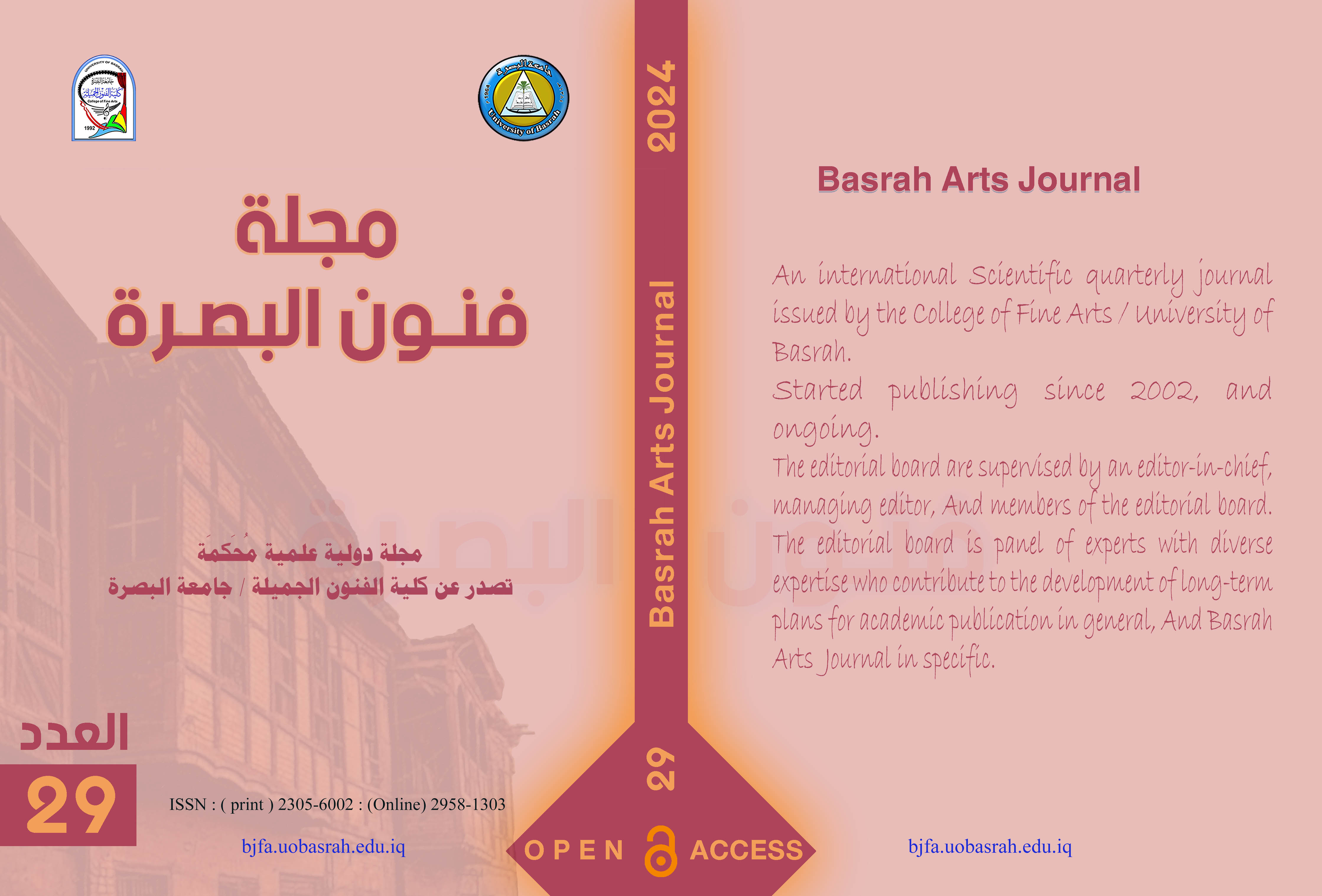Melodic diversity in Iraqi rural singing
Tuwar the subi As model
DOI:
https://doi.org/10.59767/2024.05/29.1Keywords:
Melodic diversity, singing, Iraqi countrysideAbstract
Melodic diversity is an essential pillar in Iraqi country singing because of its highly influential qualities and features in singing performance methods in a manner consistent with the nature and setting of popular heritage in the Iraqi countryside.
Hence, the researcher attempts to study melodic diversity in one of the important lyrical phases, which is "Subbi Mood " as a lyrical style discovered by the Iraqi structure with high levels of expressive performance accuracy.
The researcher seeks to study this topic by formulating the question as follows: What are the mechanisms of melodic diversity in Subbi Mood? The significance of the research and the need to determine its goal are thus represented as follows: Detecting the mechanisms of melodic diversity in Subbi Mood, the researcher presents the most important terms contained in the subject matter of the study, that is melodic diversity to be determined linguistically, philosophically and terminologically. The researcher then moves to define the terms procedurally in accordance with the research procedures.
Chapter Two, entitled “The Theoretical framework” contains two sections, one entitling, “The Concept of Melodic Diversity,” and the other, “The Singing of the Iraqi countryside: A Study in Origin and Evolution,” all the way to topics that involve the literature review and the most key conclusions resulted from the theoretical framework.
As for Chapter Three, the researcher addresses the research community and its sample in a way that meets the goal of the research and its requirements, not to mention the use of the research methodology represented by the descriptive analytical approach, leading to the research tool through which the researcher can analyze the research sample.
In Chapter Four, the researcher reached the most important findings from the sample analysis, including (1) musical scale: The Subbi mood is built from the melodic scale of Nahawand, which raises the sixth scale degree of the natural Nahawand when ascending and returns it to the standard scale of the Nahawand when descending, (2) melodic range of the seventh is built from the seventh minor scale. The researcher then seeks to interpret the findings under the heading, “Conclusions,” that includes some of the following points:
1) The lyric poem takes Subbi mood as a launch pad to express the the spirit of the country environment.
2) The seventh minor scale gives the singer the ability to perform Subbi mood easily and conveniently.
As the end of the Chapter, the researcher comes up with key recommendations, suggestions and most important sources and books cited by the researcher in this study.
References
Abdullah, E. (2000). Music dictionary. Cairo: General Authority for Amiri Printing Press Affairs.
ahmed khadija. (2021). https://almanalmagazine.com.
al bayati. (2018). The functions of the basic tones of the structure in determining its musical structure. p. 226.
al eamiri thamir , e. (1989). Rural singers and Buddhist circles. baghdad.
Aldaghlawy, H. (2024). Visual rhythm in the Iraqi theatrical performance. Journal of Arts and Cultural Studies, 3(1), 1-9. doi:https://doi.org/10.23112/acs24021201
aljabiri. (2020). Expressive speech of the rural singing form. baghdad.
Authors, G. (2001). munajiy altulaab. damascus: Dar Qabas for Publishing and Distribution.
eabd alamyr. (1975). Folkloric song in Iraq. Academic journal, p. 41.
husayin niema. (2023). Nasiriyah.
Mahfouz, H. A. (1964). Arabic music dictionary. baghdad: dar aljumhuria.
muelm. (2005). Atlas dictionary for students. qum: dar almujtaba.
Wahba, M. (1998). Philosophical dictionary. Cairo: Qubaa House for Printing, Publishing and Distribution.
Downloads
Published
How to Cite
License
Copyright (c) 2024 Mohammed Hady Atiya (Author)

This work is licensed under a Creative Commons Attribution 4.0 International License.







